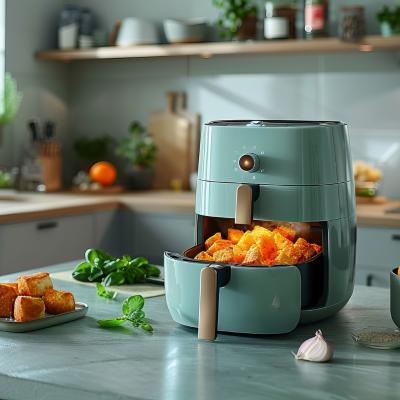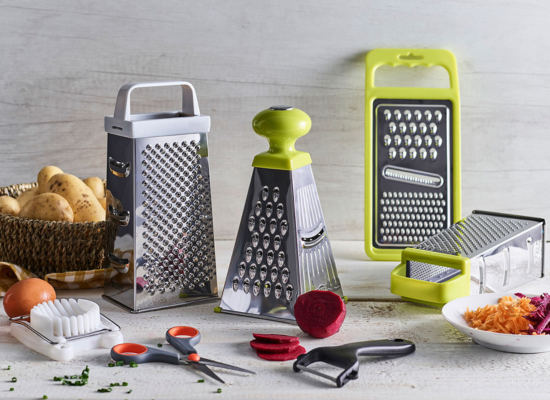
Melamine-formaldehyde (MF) tableware and utensils have gained popularity in the worldwide market and are in high demand by homes, restaurants, and institutional food services. It has excellent characteristics including being extremely durable, long-lasting, and inexpensive.
However, there is one major concern with using melamine tableware and utensils, for their potential to release melamine and formaldehyde chemicals when heated or microwaved.
Can melamine go in the microwave?
The consensus is that it is not safe to heat or microwave melamine tableware and utensils. Melamine and formaldehyde may migrate into your meal from the crockery and lead to health risks such as renal failure, kidney stones, and blood in the urine. Microwaving above 70°C reduces the lifespan of the dishes.
Microwave Cuts Lifespan of Melamine
Microwaves do not have sufficient quantum energy necessary to break chemical bonds of your melamine dishes; however they can accelerate chemical reactions, and reduce lifetime of your melamine wares.
This quantum energy affects molecular rotation and transfers microwave energy very quickly, less than 1 ns.
This energy creates non-equilibrium conditions that result in localized superheating and high instantaneous temperature of molecules. High instantaneous temperature activates molecules and increases reaction rates.
Thus, microwave heating for 1–2 min over the long-term causes chemical reactions and drastically reduces the service terms of your melamine-based crockery by more than 10-fold, as compared with the service terms under conventional heating.
So, it is strongly recommended that manufacturers provide instructions for use, e.g. “Do not use in microwave”, which should be clearly visible to consumers and not detachable from melamine ware.
LEARN MORE: Can You Use Parchment Paper In The Microwave?
Exaggerated Microwave Settings Causes Melamine Migration
Generally, melamine does not migrate from melamine-formaldehyde dinnerware into most foods.
In experiments, the only measured migration was from some samples (three out of 19 commercially available plates and cups) into acidic foods under exaggerated settings (that is, the food was held in the tableware at 160°F = 71°C for two hours).
When adjusted for actual-use conditions (cold orange juice held in the tableware for about 15 minutes), the migration would be less than 10 parts of melamine per billion parts of juice.
This is 250 times lower than the melamine level that the FDA has judged is acceptable in foods other than infant formula (2,500 parts per billion), indicating that it is clearly below the risk limit.
The quantity of melamine that migrates out of the plastic can increase when very acidic meals are cooked to extreme temperatures (e.g., 160°F = 71°C or higher). Thus, foods and drinks should not be heated in microwave ovens on melamine-based crockery.
Only ceramic or other cookware marked as microwave-safe should be used. Following that, the dish can be served on melamine-based tableware.
LEARN MORE: Can You Put Paper Towels in the Microwave?
Little Microwave Exposure Can Lead Melamine Migration Into Food
Poovarodom and his team have tested melamine formaldehyde (MF) tableware after undergoing repeated heating in a microwave oven for 1, 2, 3, or 5 min, for the migration into 3% (w/v) acetic acid, a food simulant.
They found overall migration (OM) consistently increased with an increasing number of heating/washing cycles, while formaldehyde was found at low concentrations or was not detectable.
Unexpectedly, the 1-min series caused the most rapid increase in OM; the European Union regulatory limit of 10 mg dm–2 (milligram per square decimeter) was exceeded after 25 cycles.
The number of cycles required to reach the OM limit rose to 29 and 67 for the 2- and 3-min series, respectively.
Only 37 cycles were needed in the case of the 5-min series; however, the cumulative exposure time to microwave irradiation was relatively close to that of the 3-min series.
These findings indicate that microwave heating affects the migration of MF in a significantly different manner as compared with conventional heating reported in previous studies.
LEARN MORE: Can You Microwave Ziploc Bags?
Specific Migration Limit for Melamine: Us, Eu Regulations
According to the European Union regulation on plastics intended to come into contact with foodstuffs (European Union 2011a), melamine and formaldehyde are among the monomers and additives authorized for use in the production of plastics for food contact.
However, they are subject to specific migration limits (SMLs): 2.5 mg kg–1 for melamine (European Union 2011b) and 15 mg kg–1 for formaldehyde.
In addition, the European Union has established an overall migration limit (OML) of 10 mg dm–2 for all food contact plastic materials and articles (European Union 2011a).
According to US standards, the specific migration limit for melamine in food is 1 mg/kg for infant formula and 2.5 mg/kg for other foods (U.S. FDA 2009b).
LEARN MORE: Can You Microwave Cardboard Cups?
Health Risk of Melamine
Products containing melamine at levels higher than the FDA’s risk level may put patients at risk of kidney stones, renal failure, and death. Irritability, blood in the urine, little or no pee, evidence of kidney illness, and/or elevated blood pressure are all symptoms of melamine toxicity.
Melamine has low oral acute toxicity but excessive exposure can cause renal stones. When consumed by human beings, babies and children are affected the most because of their dependence on nutrition, compounded by the immaturity of their organs; this renders them vulnerable to chemical damage.
News stories about the contamination of milk with melamine in China first emerged on Sept 11, 2008, and the situation has since become an international health scare.
By Sept 22, 2008, the Chinese authorities had reported that 52,857 children had been treated for renal complications. At least four children have died as a direct result.
By Sept 28, 2008, in Hong Kong where 95% of food is imported, much of it from the mainland, 15,017 children had attended designated clinics. Five of these children were found to have kidney stones, and four of these five had a history of living on the mainland.
The UK has ruled that all products from China containing more than 15% milk as an ingredient will be subject to documentary, identity, and physical checks, and those products containing more than 2·5 mg melamine per kg will be destroyed.
To avoid melamine toxicity, the USA has advised its citizens traveling to China with small children to take their baby food and formula.
LEARN MORE: Can You Microwave Milk?
Conclusion
Though the chemical melamine is not detectable in microwaved food, it’s important to be aware of the health risks associated with this.
Exceeding the European Union or the US regulatory limit of OM can lead to renal stones, renal failure, and death. For this reason, it is important to be vigilant while microwaving your food on melamine dishes.



